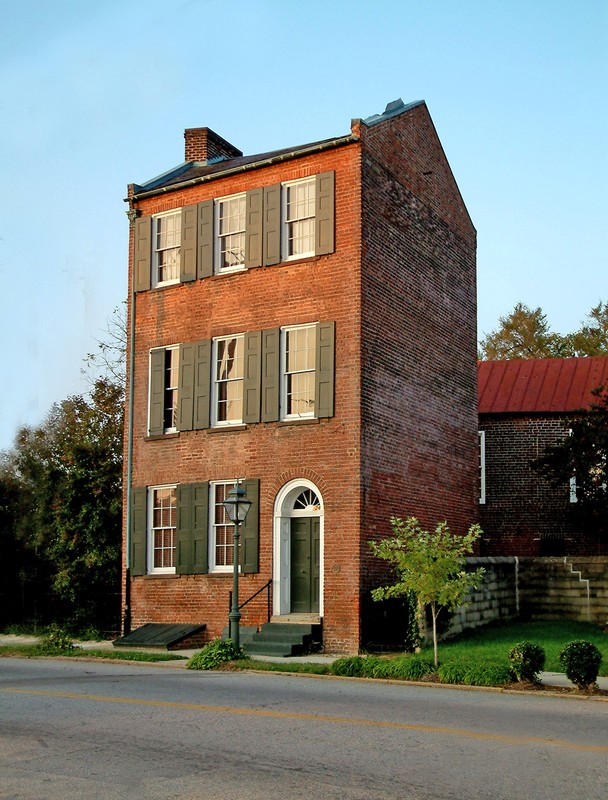The Trapezium House
Introduction
Text-to-speech Audio
Built in 1817 (after the fire of 1815), this architectural curiosity by an eccentric Irish bachelor Charles O’Hara, is in the form of a trapezium, a four-sided figure with no two sides parallel. Tradition has it that a West Indian servant persuaded O’Hara that a house without right angles could not harbor evil spirits. In fact, the lintels of two doors appear to have been tilted deliberately, and mantels, floors, and other elements converge on an imaginary vanishing point so that the interior appears to be elongated. The house is now privately owned and not open to the public.
The structure is Federal in style, brick, three stories; gable roof with three bays. The façade is Flemish-bond. Entrance with fanlight is located in the north bay.
Images
Trapezium House,1817

Backstory and Context
Text-to-speech Audio
Built in 1817 (after the fire of
1815), this architectural curiosity by an eccentric Irish bachelor Charles
O’Hara, is in the form of a trapezium, a four-sided figure with no two sides
parallel. Tradition has it that a West
Indian servant persuaded O’Hara that a house without right angles could not
harbor evil spirits. In fact, the
lintels of two doors appear to have been tilted deliberately, and mantels,
floors, and other elements converge on an imaginary vanishing point so that the
interior appears to be elongated. The
house is now privately owned and not open to the public.
The structure is Federal in style, brick, three stories; gable roof with three bays. The façade is Flemish-bond. Entrance with fanlight is located in the north bay.
Sources
Old Petersburg by Thomas F. Hale and James H. Bailey. (1976). Richmond, VA: .Hale Publishing.
